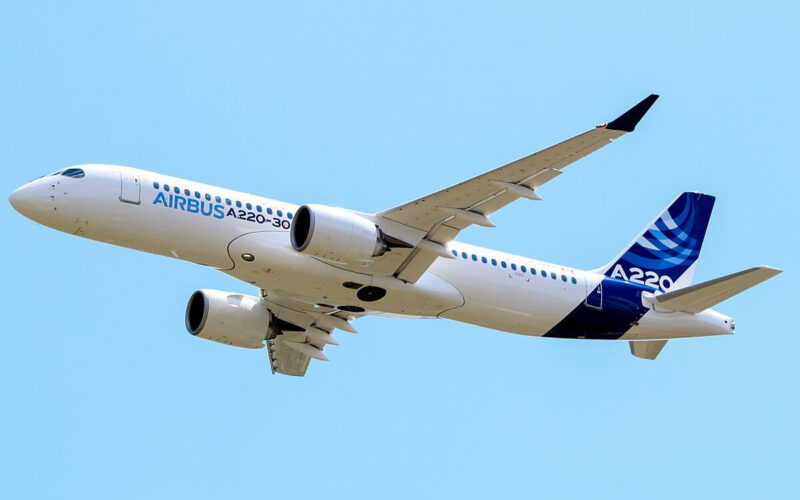Emergency Directive Issued for Airbus A220 by Transport Canada Over Landing Gear Concerns

Transport Canada has announced an urgent airworthiness directive (AD) targeting the Airbus A220 fleet, following the discovery of a critical issue with the aircraft’s main landing gear. The directive mandates immediate inspections to ensure the integrity of a key component, the pintle fuse pin, across various models of the A220 series.
Discovery of a Critical Safety Issue
During routine maintenance, it was found that a pintle fuse pin in the left-hand main landing gear of an Airbus A220 narrowbody airliner was missing. This component is crucial for maintaining the structural integrity of the landing gear during flight operations. According to Transport Canada, the absence of this pin could significantly alter load distributions on the main landing gear (MLG), compromising its ability to sustain these loads. This defect raises the risk of the MLG collapsing during critical phases such as takeoff, posing a severe safety risk.
Details of the Emergency Airworthiness Directive
The emergency AD, identified as CF-2024-28, came into effect on August 3. It requires operators to conduct detailed visual inspections of the pintle housing assembly on the A220-100 and A220-300 models within 24 flight cycles from the date the directive was issued. The inspections must confirm that the pintle fuse pins are both present and properly installed.
If any issues are identified, such as a missing or incorrectly installed pintle fuse pin, maintainers are instructed to immediately contact Airbus Canada for further directions on how to rectify the issue. The directive specifically targets Airbus A220-100 models with serial numbers ranging from 50001 to 50065 and 50067 to 50076, and A220-300 models with serial numbers from 55001 to 55284, as well as 55286 and 55289.
Implications for A220 Operators
This directive underscores the necessity for stringent inspection routines and highlights potential vulnerabilities in aircraft landing gear systems. By mandating these inspections, Transport Canada aims to prevent any incidents that could jeopardize passenger safety due to mechanical failures during flight. The move also reflects the ongoing commitment to maintaining stringent safety standards within Canada’s aviation sector, ensuring that such technical issues are addressed swiftly and effectively.
Operators of the affected Airbus A220 models must now prioritize these inspections to comply with the emergency directive and safeguard against the risk of landing gear failure. This incident also serves as a reminder of the critical nature of regular maintenance checks in identifying and mitigating potential safety issues in commercial aircraft.
Sources: AirGuide Business airguide.info, bing.com, aviationweek.com
